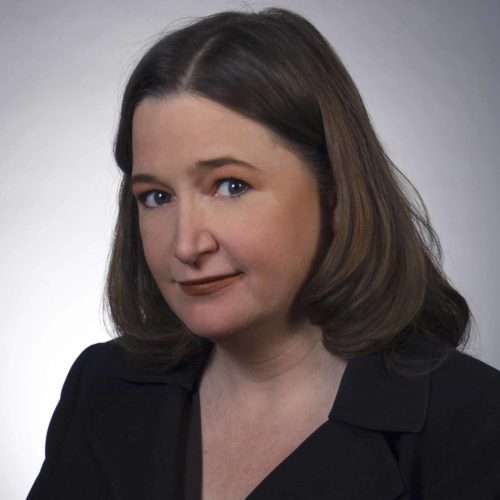Those closer to environmental problems and impacted by them know these issues better and care about them more than DC bureaucrats pushing one-size-fits-all policies. This vision is in line with what Congress intended when it passed the Clean Air Act (CAA) and Clean Water Act (CWA). Both statutes intended for states to play the primary role on air and water quality. Over the years though, the EPA has usurped state and local power and ignored Congressional intent.
The United States has some of the best air quality in the world, something that sometimes get lost given all of the scare tactics that are disseminated in the media. CEI has been a leader in pushing back against such alarmism, as well as the junk science and regulatory games that the EPA plays to improperly justify costly air quality regulations.
CEI believes that any air quality standards should be informed by sound science and do more good than harm. This is hardly controversial, but it remains an uphill battle with an often out of control EPA.
When it comes to the CWA, there has long been regulatory uncertainty. For decades, the EPA and the U.S. Army Corps of Engineers have continued to overreach on what waters are even regulated under the Clean Water Act. In 2023, the U.S. Supreme Court finally provided some clarification on this key issue in Sackett v. EPA, but the Biden administration is not implementing the opinion properly.
CEI has extensive CWA expertise, especially when it comes to the “Waters of the United States” or WOTUS issue, and is using that expertise to ensure that the federal government follows the law, respects the principles of federalism embedded in the CWA, and provides clear and workable definitions for property owners. This is just part of our CWA work, which also covers issues such as state abuse of the Section 401 certification process and EPA retroactive vetoes of Section 404 permits.
Featured Posts

Blog
Time to shut down IRIS—for good
The Environmental Protection Agency (EPA) is reportedly preparing to eliminate its Office of Research and Development, which houses the controversial Integrated Risk Information System…

News Release
Supreme Court declines to issue stays against two EPA rules
Earlier today, the Supreme Court declined to issue stays against the Environmental Protection Agency’s (EPA) methane and mercury and air toxic standards (MATS) rules. Director…

Study
Corn Whiskey Clarity
Over the past two decades, Iowa has implemented several reforms aimed at enhancing the efficiency of its environmental permitting procedures. This report focuses on two…
Search Posts
Newsletter
The Competitive Enterprise Institute Daily Update
Issues In the News: 1. REGULATING THE REGULATORSSupreme Court Tells EPA to Re-Consider its Decision Not to Regulate C02…
Study
This Liberal Congress Went to Market: a Bipartisan Policy Agenda for the 110th Congress
DO…
Op-Eds
Top Ten Junk Science Moments for 2006
It’s time again for JunkScience.com’s review of the most notable junk science events of the year – a “top 10” list that may sometimes…
Op-Eds
Homeland Bureaucracy?
Writer P.J. O'Rourke once quipped: “Giving money and power to government is like giving whiskey and car keys to teenage boys.” It seems…
News Release
CEI Responds to Scientist’s Criticism of Global Warming Ad Campaign
<?xml:namespace prefix = o ns = “urn:schemas-microsoft-com:office:office” /> Contact: Jody Clarke, 202.331.2252 [email protected]…
Op-Eds
Defining Virtue
by Isaac Post | May 21, 2006 David Vogel’s The Market for Virtue: The Potential and Limits of Corporate Social Responsibility offers…
News Release
President Bush’s Call For Higher Fuel Economy Standards–A Lethal Regulatory Fix
<?xml:namespace prefix = st1 ns = “urn:schemas-microsoft-com:office:smarttags” />Washington, DC, April 28, 2006—The Competitive Enterprise Institute today called President Bush’s request for higher fuel…
Study
Stay Cool; Stay Very Cool: A Commentary on Time’s “Special Report” on Global Warming
The cover of Time magazine’s April 3, 2006 issue tells readers to “be very worried” about climate change. The issue features a “special report” on…
Op-Eds
Top Ten Junk Science Stories of the Past Decade
My web site JunkScience.com celebrated its 10th anniversary on April 1, 2006. To mark the event, this column spotlights…
Op-Eds
Senate Sets Up Lopsided Global Warming ‘Debate’
The Senate Energy and Natural Resources Committee will kick off a legislative effort to address global warming next…
News Release
Senate Shuts Out Dissent on Greenhouse Gas Limits
<?xml:namespace prefix = st1 ns = “urn:schemas-microsoft-com:office:smarttags” />Washington, D.C., March 29, 2006—Next week’s scheduled Senate hearing on mandatory greenhouse gas emissions limits…
Op-Eds
EPA Whips Up Air Pollution Scare
The air pollution scare industry is at it again — in a very timely manner to help the Environmental Protection Agency impose more dubious…
Newsletter
The Competitive Enterprise Institute Daily Update
Issues in the News 1. SAFETY Congress considers legislation to standardize food labeling and safety warnings. CEI Expert…
News Release
On First Anniversary, Kyoto’s Future Looks Bleak
<?xml:namespace prefix = st1 ns = “urn:schemas-microsoft-com:office:smarttags” /> Contact: <?xml:namespace prefix = o ns = “urn:schemas-microsoft-com:office:office” /> Richard Morrison, 202.331.2273…
Study
An Assessment of Montreal COP/MOP 1
Full Document Available in PDF The December 2005 Montreal “COP-MOP” Kyoto…
Op-Eds
Gutting Kyoto
The worldwide press hailed the December negotiations in <?xml:namespace prefix = u1 /><?xml:namespace prefix = st1 ns = “urn:schemas-microsoft-com:office:smarttags” />Montreal over the Kyoto…
Op-Eds
No Future in Kyoto Dreaming
In 1977, the punk rock band the Sex Pistols shocked England with their nihilist anthem “God Save the Queen,” where they declared there was “No…
News Release
Frist Should Cancel Senators’ Christmas Vacations
Contact: Richard Morrison, 202.331.2273 Washington, D.C., December 20, 2005— Statement of Myron Ebell, Director of Global Warming & International Environmental Policy at the Competitive…
Op-Eds
Enviros Exaggerated Montreal Summit
A world historical event occurred in <?xml:namespace prefix = st1 ns = “urn:schemas-microsoft-com:office:smarttags” />Montreal in the hours before dawn on December 10. What? …
News Release
Bill Clinton’s Shifting Policy on Climate Change
Contacts: Marlo Lewis, 202.669.6693 (Montréal) Myron Ebell, 202.320.6685 (<?xml:namespace prefix = st1 ns = “urn:schemas-microsoft-com:office:smarttags” />Washington, D.C.)…
News Release
Senator Bingaman’s Bogus Climate Proposal
Contacts: Myron Ebell, 202.320.6685 (<?xml:namespace prefix = st1 ns = “urn:schemas-microsoft-com:office:smarttags” />Montreal) Richard Morrison, 202.441.9652 (Montreal)…
Op-Eds
Global Warming Blues
The 11th annual meeting of global warming enthusiasts in Montreal isn’t turning out to be a very happy event. Even though this is the…
News Release
Judges Deny Rehearing of Greenhouse Gas Lawsuit
Washington, D.C., December 2, 2005—The D.C. Circuit Court of Appeals has turned away an appeal from state authorities and environmental groups which sought…
Op-Eds
Dubai The Model?
Westerners who travel to the Middle East often pass through Dubai and sigh deeply. “If only the rest of the Muslim Middle East were as…
News Release
Misspending, Abuses Marks Tobacco Settlement Anniversary
<?xml:namespace prefix = o ns = “urn:schemas-microsoft-com:office:office” /> Contact: Christine Hall, 202.331.2258 Washington, D.C., November 28,…
News Release
Misspending, Abuses Marks Tobacco Settlement Anniversary
Christine Hall, 202.331.2258 Washington, D.C., November 28, 2005—Seven years ago this month, the states signed the biggest settlement deal in history with major tobacco…
News Release
Federal Judge Dismisses Greenhouse Gas Lawsuit
<?xml:namespace prefix = st1 ns = “urn:schemas-microsoft-com:office:smarttags” />Washington, D.C., September 15, 2005—A federal judge today dismissed a lawsuit brought by several states and…
Op-Eds
On a Different Coast, New Orleans Jazz Plays On
“Well I had to come out and work, because there was housing.” That's what <?xml:namespace prefix = st1 ns = “urn:schemas-microsoft-com:office:smarttags” />New Orleans…
Newsletter
The Competitive Enterprise Institute Daily Update
Issues in the News 1. HURRICANE KATRINA Sen. Trent Lott calls on the federal and Mississippi state government to cut the…
News Release
Free Market Leaders Praise Decisive EPA Action on Energy Affordability
<?xml:namespace prefix = st1 ns = “urn:schemas-microsoft-com:office:smarttags” />Washington, D.C., August 31, 2005—Today representatives of five national public policy groups sent an open letter to…
Op-Eds
A Law Unto Themselves
It’s always an ambitious task to argue that a seemingly technical abuse of the Constitution is responsible for much of what is wrong with American…
Op-Eds
All Cost, No Benefit
Tomorrow, the Senate Energy and Natural Resources Committee will hold a hearing on Sen. Jeff Bingaman's (D-N.M.) Climate and Economy Insurance Act. Originally…
Newsletter
The Competitive Enterprise Institute Daily Update
Issues in the News 1. AUTOMOBILITY The National Highway Traffic Safety Administration proposes new fuel economy rules based on car…
News Release
Federal Court Deals Blow to Climate Alarmists
<?xml:namespace prefix = o ns = “urn:schemas-microsoft-com:office:office” /> Contact: Richard Morrison, 202.331.2273 Washington,…
Op-Eds
Trillion-Dollar Radiation Mistake?, by Steven Milloy
A federal research panel last week concluded that there is no safe exposure to radiation. It’s a conclusion based on assumptions about cancer…
Newsletter
The Competitive Enterprise Institute Daily Update
Issues in the News 1. INTERNATIONAL DEVELOPMENT The G8 nations propose a new aid package for Africa. CEI Expert Available…
Op-Eds
Hybrid Hubris?
<?xml:namespace prefix = u1 />The <?xml:namespace prefix = st1 ns = “urn:schemas-microsoft-com:office:smarttags” />Commonwealth of Virginia is faced with an unpleasant problem with its…
Newsletter
Cooler Heads
Politics Kyoto Goes into Force On February 16, 2005, the Kyoto Protocol came into force internationally. Thirty-four nations are now committed to reducing…
Study
The Environmental Source
NOTE: A new edition of The Environmental Source has been published. The new version of this essential reference book on environmental policy is available in…
Op-Eds
New York Summer Without New York Smog?
Summer is over, and it was a very good one for air quality in <?xml:namespace prefix = st1 ns = “urn:schemas-microsoft-com:office:smarttags” />New York…
Op-Eds
We’re Lucky to Have Clean Air, but it’s not all Due to Luck
Summer is more than half over, and, thus far, it has been a very good one for air quality in the Chicago metropolitan area. By…
Op-Eds
Smog Shrinkage
Summer is more than half over, and thus far it has been a very good one for air quality in theWashington, D.C. metropolitan area. By…
Op-Eds
If You Really Want to Reduce Gas Prices, Here’s How
Despite claims to the contrary, there is not much the federal government can do about high oil and gasoline prices in the short-term. Indeed, given…
Op-Eds
EPA Launches Costly New Smog Standard
On April 15, the Environmental Protection Agency (EPA) launched its new plan to tighten the national ambient air quality standard for smog. Policy experts warn the…
Op-Eds
Sensible Policy Lost in Smog
The Environmental Protection Agency recently launched its massive new plan to fight smog. Get ready for another <?xml:namespace prefix = st1 ns = “urn:schemas-microsoft-com:office:smarttags” />Washington mandate that will do more economic harm than environmental good. Ozone, the primary constituent of smog, is a lung irritant caused by motor vehicle and industrial pollution as well as natural emissions. Smog was perhaps the single biggest reason for the 1970 Clean Air Act, and has been heavily regulated since. According to EPA, it has declined more than 30 percent in the last three decades. Outside several trouble spots in California, virtually the entire nation now is in or near compliance with existing ozone air quality standards. And, due to measures already in the works (new motor vehicle emissions standards starting with the 2004 model year, new control requirements for power plants), those areas not yet in compliance are on their way toward it. Despite lack of evidence the existing ozone standard was deficient, the Clinton administration decided to tighten it. EPA's Clean Air Scientific Advisory Committee concluded this tougher standard would not be “significantly more protective of public health,” and called the change a “policy judgment.” The agency's own cost-benefit analysis found the modest marginal benefits of the new standard outweighed by its costs. Nonetheless, EPA went ahead with the rule, sparking several years of legal challenges, all the way to the Supreme Court. The Supreme Court essentially deferred to EPA's judgment, and upheld the new standard. However, the legal delays meant this Clinton administration's rule, first promulgated in 1997, would have to be implemented by its successor. And George Bush's EPA Administrator Michael Leavitt now has obliged. Mr. Leavitt estimates compliance costs of $50 billion over the next 15 years. The specific control measures for the 474 counties currently violating the new standard will depend on the extent of noncompliance in each county. The possibilities include more stringent requirements on new or substantially modified industrial facilities, restrictions on highway construction projects, measures affecting small businesses, and more onerous vehicle inspection programs. Each of the 31 states with non-attainment areas must submit a compliance plan for EPA approval by 2007. These plans will likely remain in effect many years after. The expense will affect employment, traffic congestion, and the cost of living. Even gasoline prices may be pushed up. Areas violating the new smog standard may have to use one of the costly specialized gasoline blends that have proliferated in recent years. And many refiners now will have more difficulty obtaining approval for much-needed capacity increases. Of course, EPA's announcement of the rule gave the impression the U.S. smog problem is worsening. Nothing could be more untrue. But while the benefits of this new standard may prove hard to identify, the costs almost certainly will not.
Newsletter
Vol. VIII, No. 8
Politics Candidate Kerry on Kyoto and Global Warming The campaign web site of Senator John Kerry (D—Mass.) only briefly mentions what…
Op-Eds
Driving Away Pollution
Your next new car or truck will be the cleanest-burning one you've ever owned. And it means the end to the already-diminishing problem…
Op-Eds
A Clear Mistake
The Clear Skies Initiative, President Bush's big environmental bill targeting power plant emissions, appears to be stalled in Congress. In an effort to…
Op-Eds
The Air Gets Cleaner, While Environmental Politics Gets Dirtier
The way the administration’s environmental critics tell it, you can’t see your hand in front of your face anymore because of all the pollution…
Op-Eds
Who Should Have Air Supremacy?
The Clean Air Act (CAA), perhaps the federal government's most powerful environmental tool, concedes in its very first section, “air pollution control at…
Staff & Scholars

Daren Bakst
Director of the Center for Energy and Environment and Senior Fellow
- Energy and Environment
- Lands and Wildlife
- Property Rights

Sam Kazman
Counsel Emeritus
- Antitrust
- Automobiles and Roads
- Banking and Finance

Marlo Lewis, Jr.
Senior Fellow
- Climate
- Energy
- Energy and Environment

Ben Lieberman
Senior Fellow
- Climate
- Consumer Freedom
- Energy

Angela Logomasini
Adjunct Fellow
- Chemical Risk
- Consumer Freedom
- Energy and Environment